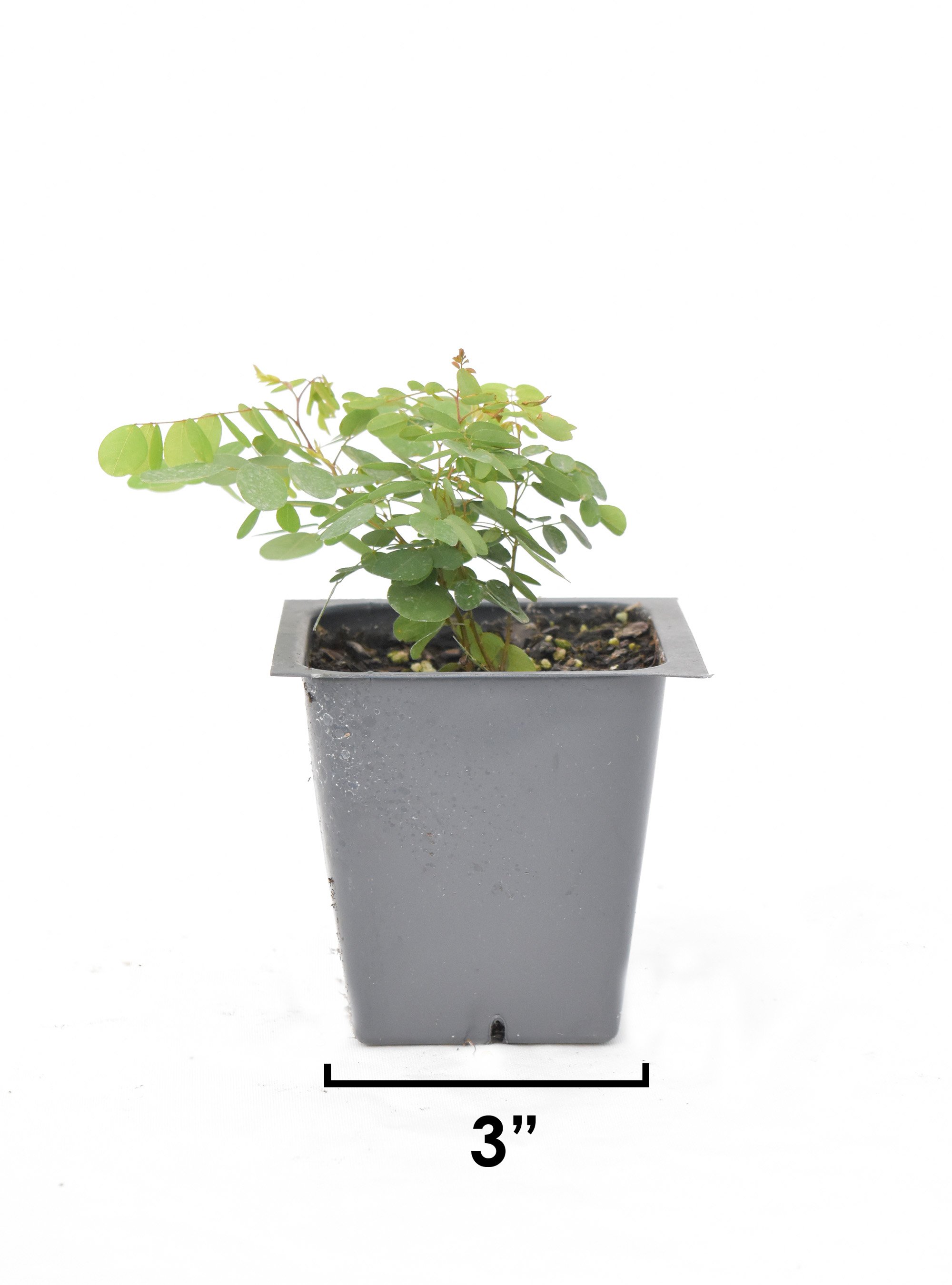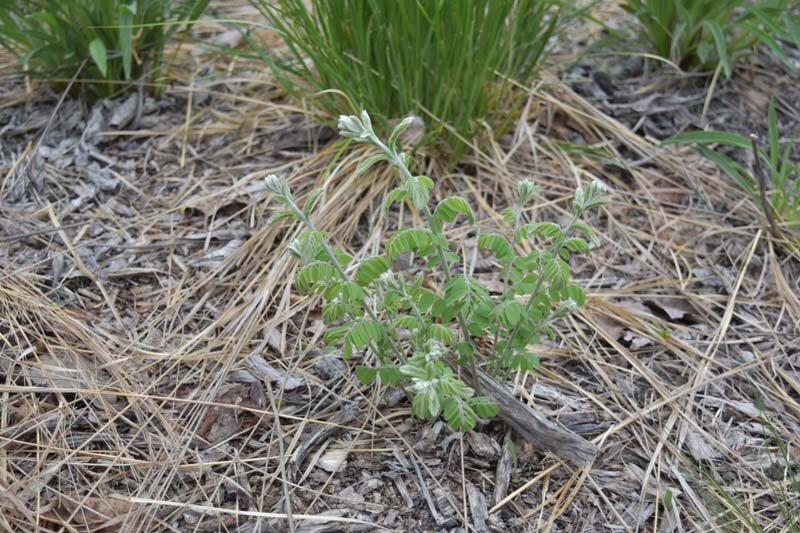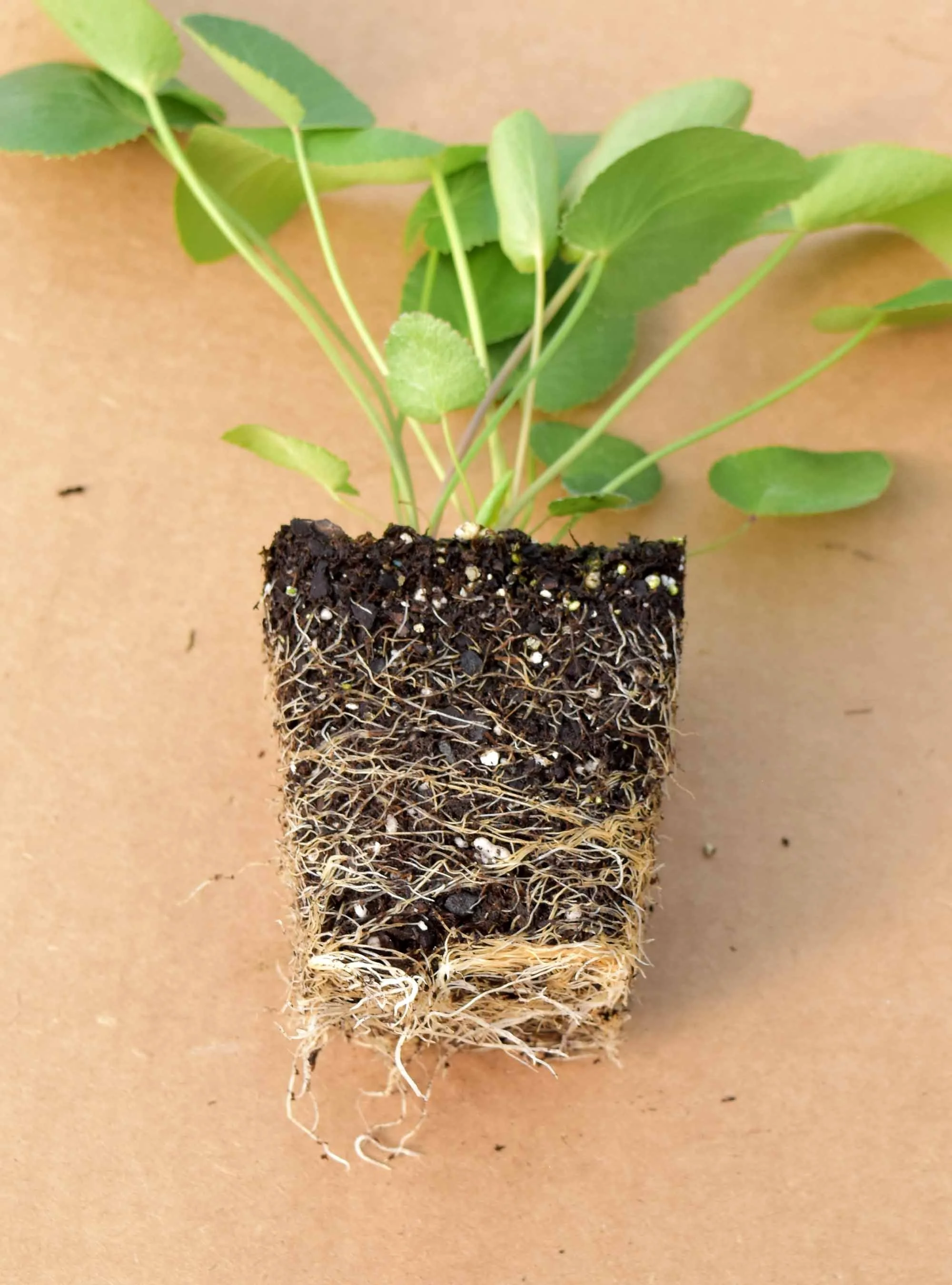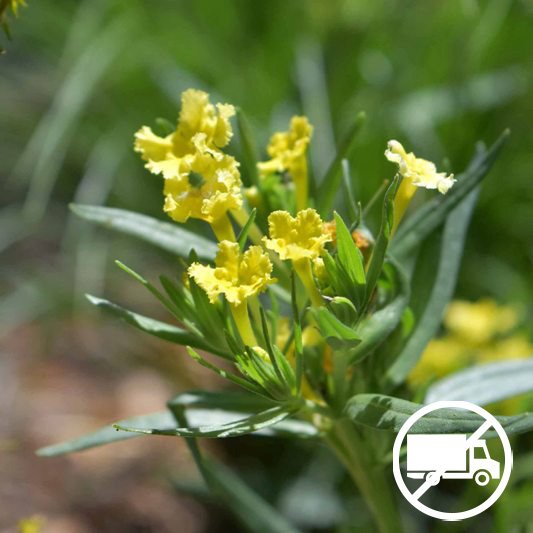 Image 1 of 8
Image 1 of 8

 Image 2 of 8
Image 2 of 8

 Image 3 of 8
Image 3 of 8

 Image 4 of 8
Image 4 of 8

 Image 5 of 8
Image 5 of 8

 Image 6 of 8
Image 6 of 8

 Image 7 of 8
Image 7 of 8

 Image 8 of 8
Image 8 of 8









Lead Plant (Amorpha canescens) 3-pack of pots
Can’t be shipped.
Pretty silver-hued leaves complement the purple and orange flowers on Lead Plant. A super deep taproot–up to 20 feet deep!–helps this long-lived plant survive droughts. Every sunny prairie garden deserves at least one Lead Plant. It is a legume–a plant that increases nitrogen in the soil. The stems often persist and grow new shoots the next year, like a shrub.
Details
Perennial
Sun: Full Sun, Part Shade
Moisture: Medium, Medium-Dry, Dry
Height: 3 feet
Blooms: June, July, Aug
Color: Purple
Spacing: 1-2′
Spreads: Doesn’t spread much
Zones: 3-9
Benefits: Pollinators, Deer Resistant, Unique foliage
Design Tips
Lead Plant (Amorpha canescens) is a small lanky shrub that is best planted individually in sunny gardens. We like to plant just a few Lead Plant flowers interspersed in larger masses of shorter prairie flowers and grasses such as Narrow-Leaf Coneflower, Butterfly Milkweed, Prairie Dropseed, and Star Sedge.
Great native plant choice for the Minnesota Lawns to Legumes grant program!
Companion Plants
Nodding Onion
Butterfly Milkweed
Narrow-leaved Coneflower
Prairie Dropseed
Size: 3-pack of pots, each pot is 3" wide x 3" deep
These pots can’t be shipped — pickup only!
Can’t be shipped.
Pretty silver-hued leaves complement the purple and orange flowers on Lead Plant. A super deep taproot–up to 20 feet deep!–helps this long-lived plant survive droughts. Every sunny prairie garden deserves at least one Lead Plant. It is a legume–a plant that increases nitrogen in the soil. The stems often persist and grow new shoots the next year, like a shrub.
Details
Perennial
Sun: Full Sun, Part Shade
Moisture: Medium, Medium-Dry, Dry
Height: 3 feet
Blooms: June, July, Aug
Color: Purple
Spacing: 1-2′
Spreads: Doesn’t spread much
Zones: 3-9
Benefits: Pollinators, Deer Resistant, Unique foliage
Design Tips
Lead Plant (Amorpha canescens) is a small lanky shrub that is best planted individually in sunny gardens. We like to plant just a few Lead Plant flowers interspersed in larger masses of shorter prairie flowers and grasses such as Narrow-Leaf Coneflower, Butterfly Milkweed, Prairie Dropseed, and Star Sedge.
Great native plant choice for the Minnesota Lawns to Legumes grant program!
Companion Plants
Nodding Onion
Butterfly Milkweed
Narrow-leaved Coneflower
Prairie Dropseed




































